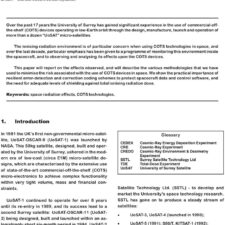Humanity’s first explicit step in reaching another star: The Interstellar Probe Mission
£5.00
P. C. Brandt et al (2019), JBIS, 72, pp.202-212
Refcode: 2019.72.202
Abstract:
An Interstellar Probe mission concept using today’s technology is presented. Science targets include the physics of the interstellar medium and obtaining the first external image of our own heliosphere, a flyby exploration of Kuiper Belt Objects (KBO), such as Quaoar, the circum-solar debris disk, and astrophysical observations of the Extragalactic Background Light (EBL) enabled by going beyond the Zodiacal Cloud. The example science payload includes a particle and fields suite, dust, optical and IR imaging systems. The goal of the Interstellar Probe is to reach 1000 AU. Assuming a spacecraft, the size of New Horizons with 478 kg launch mass, and a launch on board a Space Launch System (SLS) vehicle, the payload mass and power cannot exceed 50 kg and 50 W (both including 30% margin). Integrated and mass optimized instrument solutions are needed to achieve these targets. It is suggested to baseline the use of General Purpose Heat Source (GPHS) (RTGs) used on Ulysses, Galileo, Cassini and New Horizons and use Ka-band communication accepting relatively low rates and longer downlink times. Using available heat-shield mass estimates from Parker Solar Probe (PSP), a preliminary trajectory analysis of an Oberth Manoeuvre near the Sun offers higher asymptotic speeds than that of a direct inject to a Jupiter Gravity Assist (JGA). Required trade-off studies are outlined. An immediate Interstellar Probe mission would be the boldest undertaking in space exploration ever done and break new grounds at the space science frontier marking the historic milestone when humanity took the first explicit step on the expansion beyond our solar system.





